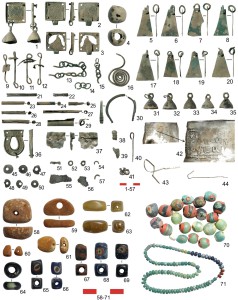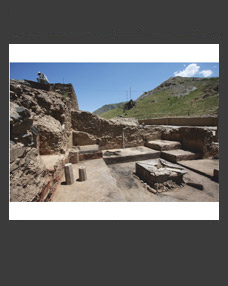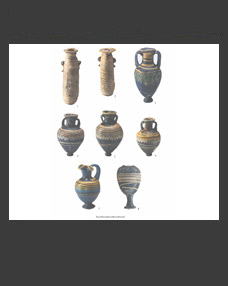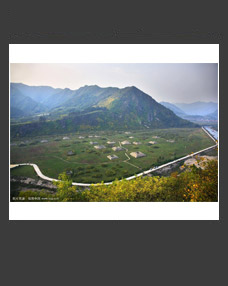 Vlasta E. Rodinkova1*, Irina A. Saprykina1*, Svetlana A. Sycheva2**
Vlasta E. Rodinkova1*, Irina A. Saprykina1*, Svetlana A. Sycheva2**
1) Institute of Archeology RAS, Moscow, Russia
2) Institute of Geography RAS, Moscow, Russia
*E-mail: vlasta2004@mail.ru; dolmen200@mail.ru
** E-mail: sychevasa@mail.ru
Keywords: the early Middle Ages, the Middle Dnieper and the Dnieper Left Bank, Martynovka type treasures.
In 2009, on the territory of the village of Zamostie near the city of Sudzha, Kursk Region, a hoard containing more than 1500 items was found. These are mainly the items related to Group I of the “antiquities of the Antes”, which makes it possible to attribute the Sudzha-Zamostie hoard to the Martynovka type treasure complexes. However, in its composition there are earlier products – of the second half of the 5th‑6th century and even of the 2nd‑3rd centuries. Most items have traces of use or repair, many are broken. Complete sets of personal ornaments are missing. The items were discovered in several clusters and individually on the area of about 6 m2 0.3–0.7 m deep in the low floodplain of the Sudzha, 50 m from the modern coastline. There are no cultural layers of the Roman and early medieval time on the site of the discovery. Synchronous archaeological sites in the immediate vicinity are unknown. The results of paleopedology studies show that in the past the treasure hiding site was periodically flooded. The composition features and mode of the complex occurrence challenge its traditional interpretation as a set of material assets hidden at the time of danger. The Sudzha-Zamostie hoard, as some other treasures of the “Martynovka” kind, can have been of a sacral nature.
DOI: 10.7868/S0869606318020101







